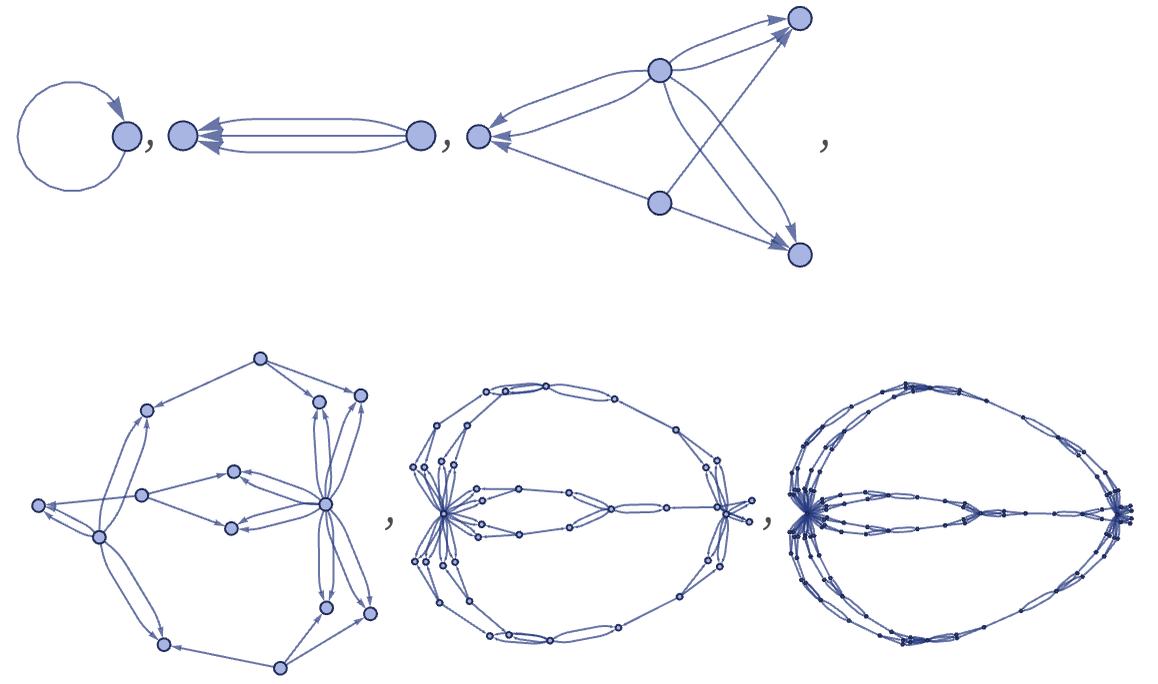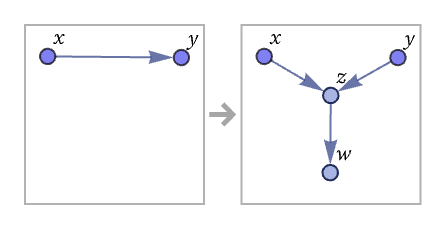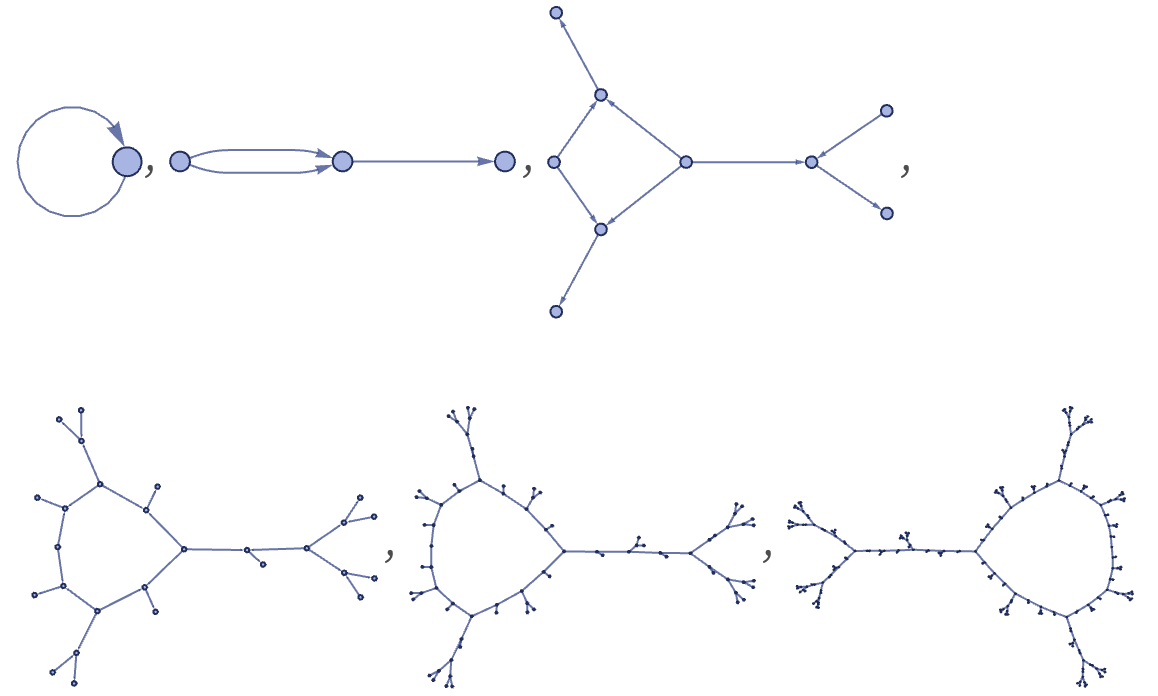Rules can involve several copies of the same relation, corresponding to multiedges in a graph. A simple example is the rule:

Running this rule produces a structure with 3n edges and ![]() nodes at step n:
nodes at step n:

Rules can both create and destroy multiedges. The rule

generates a multiedge after one step, but then destroys it:

 download pdf
download pdf  ARXIV
ARXIV peer review
peer review